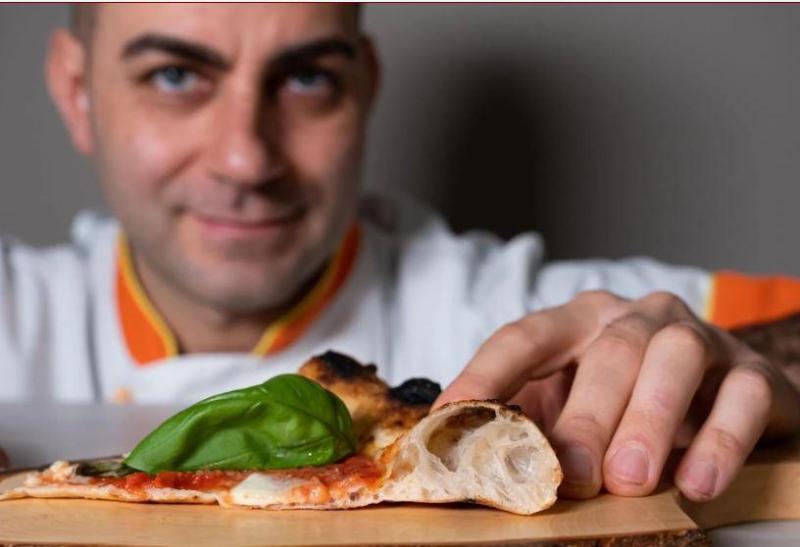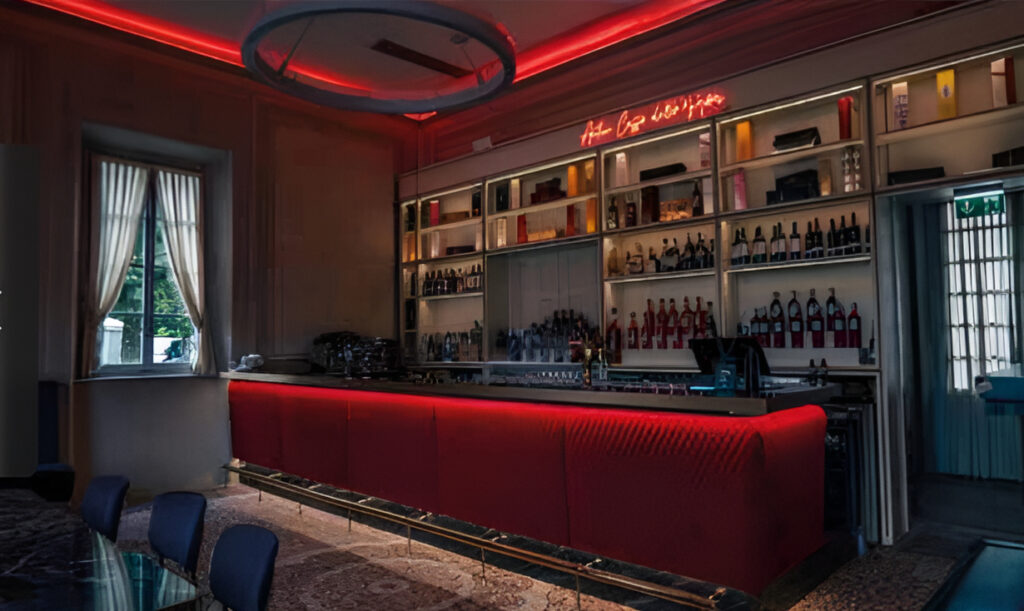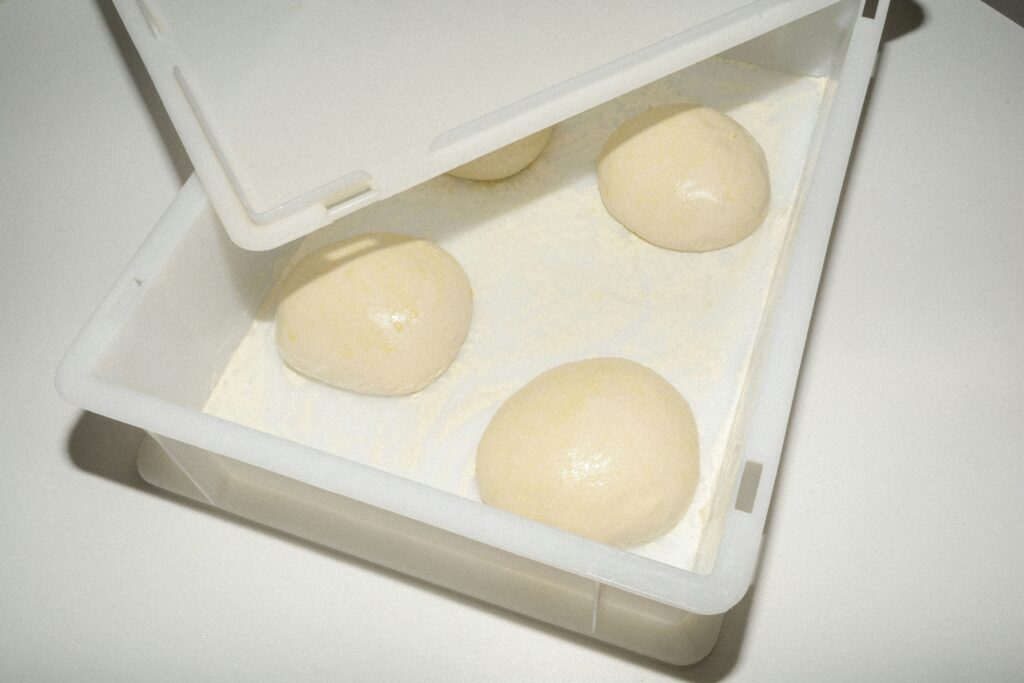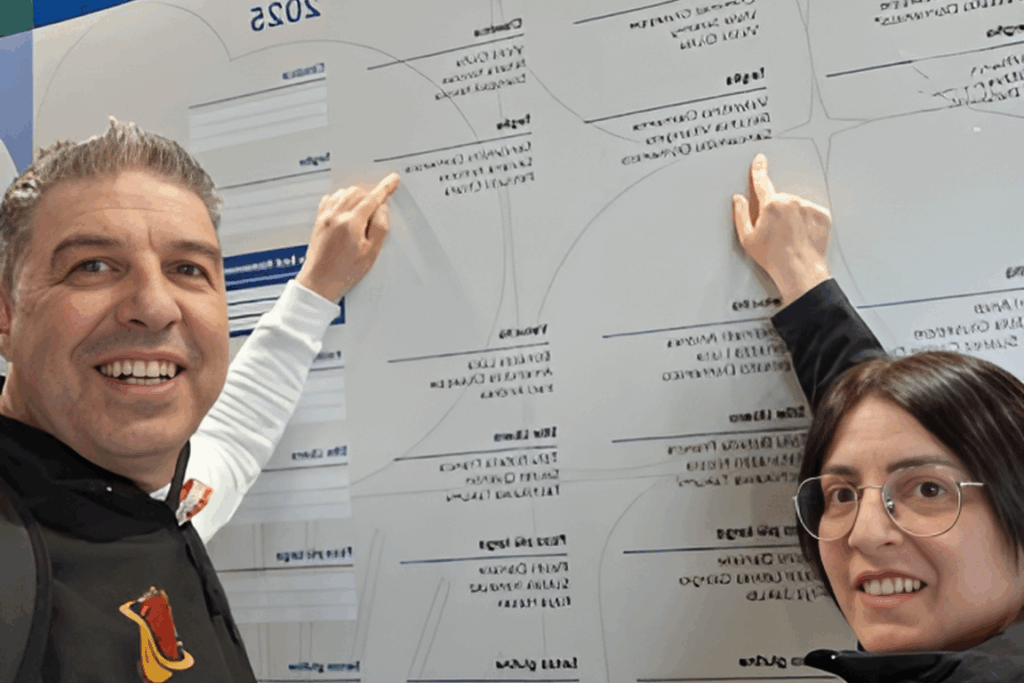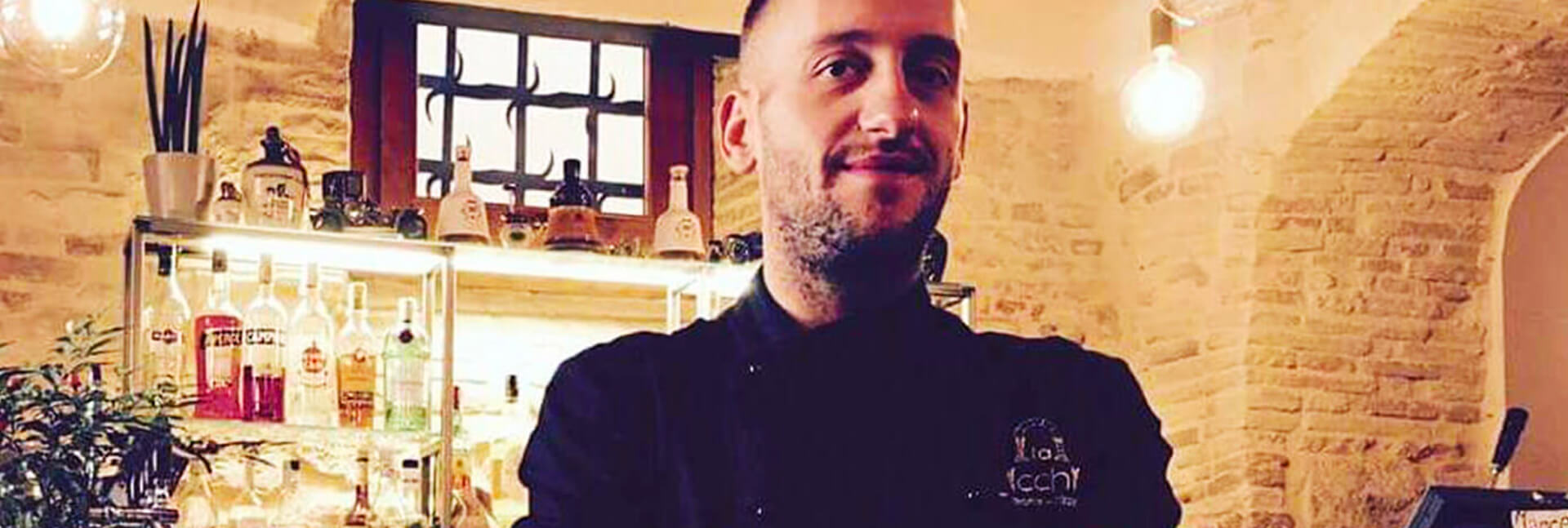
Cosa significa Emergente Pizza per un giovane pizzaiolo? Andiamo alla scoperta di Guido Nardi, giovane pizzaiolo e finalista di Emergente Pizza Centro Sud 2020.
Tell us what you think about your participation in Emergente Pizza Competition.
I am very proud to be a Finalist and to have received some good feedback from the judges. I hope for a good outcome in the Final! Emergente Pizza is a competition that offers many opportunities to pizza makers, not only in terms of visibility – which is never a bad thing – but also in terms of confrontation and sharing with colleagues who have different educational backgrounds.
What’s left of Emergente Pizza competition?
I haven’t participated in many contests other than Emergente Pizza, but of this one I have good memories of the policy chosen to bring pizza makers under the spotlight. First of all, the choice to look at the emerging world; in the midst of so many notable and well-known personalities in the pizza world, this contest is on a different level because it is more realistic and much more stimulating for us!
Secondly, this competition aims to tell the story of our experiences on several levels; let me explain: “It’s not only about how we make pizzas, but it’s about our choice of dough, our choice of a producer, how we present pizza and tell our diners about it, at what price we choose to put it on the menu, whether we have a wine or beer list to match our preparations, how many of us are at the counter and how we are organized.
All these restaurant aspects tell the story of our philosophy and our way of doing business, not just who we are.
What is your life dream/ambition?
I can feel pretty lucky: I dreamed of opening my own pizzeria/restaurant and I did it. I founded La Nicchia in 2015 and over time it has become the place I wanted it to be, where innovation and creativity blend with elegance and attention to detail.

Which pizza is most popular in your restaurant?
The most popular pizza is “Sua Maestà L’Oliva Ascolana” (Her Majesty the Ascolana Olive), the result of a careful study on our Ascolana olive, an excellent product of the territory.
In order to have a balance between the base and the topping, I made the dough using flours with more marked rustic scents, type 2 flour and organic type 0 flour by Agugiaro e Figna, creating a Focaccia.
For the topping I tried to deconstruct the Ascolana Olive, combining ingredients in a more pizza-like way. At the base, a 36-month Parmigiano Reggiano cream and a quenelle obtained by creamy pouching 3 different pieces of meat: beef, pork and chicken and their bottoms.
After baking, I added the Oliva Tenera Ascolana PDO, with top secret marination; then, I decorated with frayed, dried and fried meat to give a crispy element and gold leaf to give color and elegance.
What’s the best pizza you’ve tasted to date?
Definitely “La Pizza Al Piccione” by Simone Padoan at Tigli in San Bonifacio. On this pizza there are four cuts of pigeon, leg, breast, supreme and pâté on a rye and oat dough. I fell in love with it!
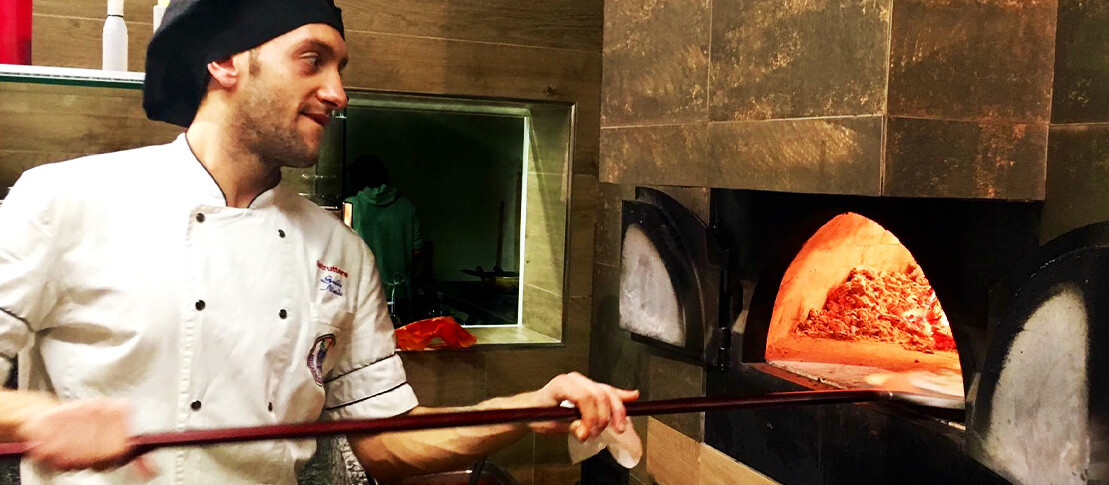
What kind of pizza maker do you think you are?
I consider myself an atypical and eclectic pizza maker.
When I first started working in catering industry I was a chef. This experience gave me specific knowledge about certain products I prepare every day in my pizzeria. My philosophy is to offer pizzas in which cuisine elements are used as toppings, without being intrusive and respecting the pizza for what it is.
Besides pizza, what do you like to cook?
My passion for leavened products also involves leavened pastry products for special occasions: Colomba, Panettone etc. And I also have a certain interest in the bakery world. La Nicchia is also a restaurant, so I would like to offer a complete homemade basket of bread, breadsticks, scones and Friselle to those who choose cuisine dishes.
What kind of dough do you use for your pizzas?
For more than 10 years I have been using mother yeast, therefore I work with natural leavening and slow fermentation in order to have a greater maturation of the dough. If done carefully and with the right flours in terms of quality and characteristics, this way of working allows me to have a lighter and more digestible product. I sometimes like to use semi-whole flours which add flavor and character to the dough.
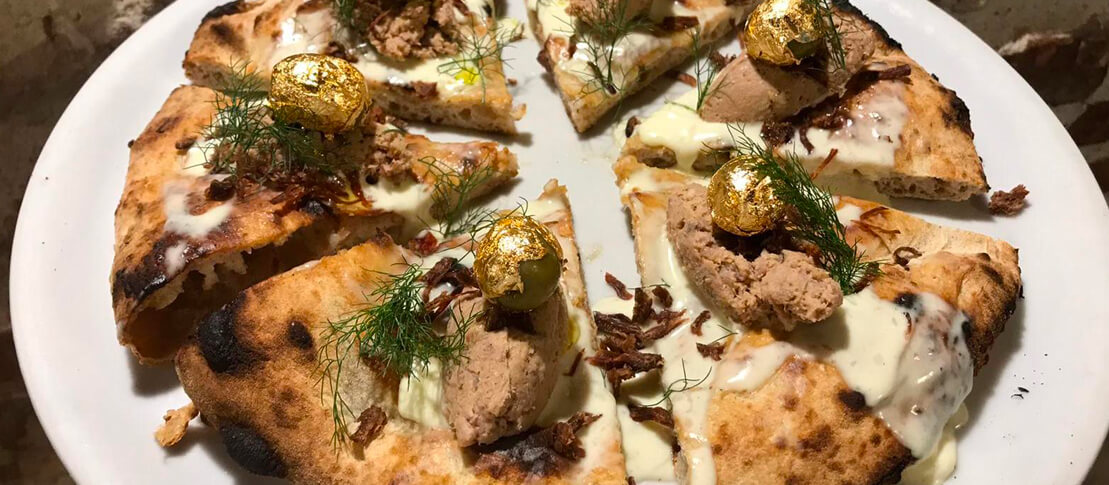
How do you perceive yourself and your pizzeria within your territory?
My proposal is definitely different from what you can find locally.
By differentiating the dough both in terms of flours used and type of processing, I can offer the customer a variety that is increasingly demanded these days.
I also prefer using ingredients that can be more appealing such as hemp, rice, burnt wheat or Jervicella wheat, which is typical of the Fermo area.
Researching local typicality or simply enhancing a product through pizza keeps me connected to local producers, who are the true expression of the territory.
What are the good and bad sides of this business?
Well, every coin has two sides. Pizza making, like all restaurant businesses, is an activity that requires sacrifice, skill, tenacity, investment and hours of sleep lost, both in the beginning and afterwards.
This is not an activity that you can just improvise, as many may believe, and if there is a negative side it is precisely this. We often pay for the unwise choices made by colleagues, or presumed colleagues, who distort and mortify the category. For example, I started training at the age of 13 and often lacked the time to do what my peers were doing.
While continuously learning and updating my knowledge throughout the industry, I’ve realized over the years that that well done job pays off!
Satisfactions do arrive and, with a fair amount of ambition and creativity, even some honors.
As Emergente, for example!
Is there any person you have taken as an example in the world of Pizza?
The first person who mentored me was Luigi Acciaio, who gave me a different vision of the classic way of making pizzas, using products and processes that are more refined than the current standards.
Being a lover of cooking, I really like the style of Simone Padoan, who treats his pizzas as real cuisine dishes. Anyway, I hope that each of us, in our own way, can somehow become a stimulus and inspiration for others.
What is your motto?
Believe for Win! No explanation is needed!
